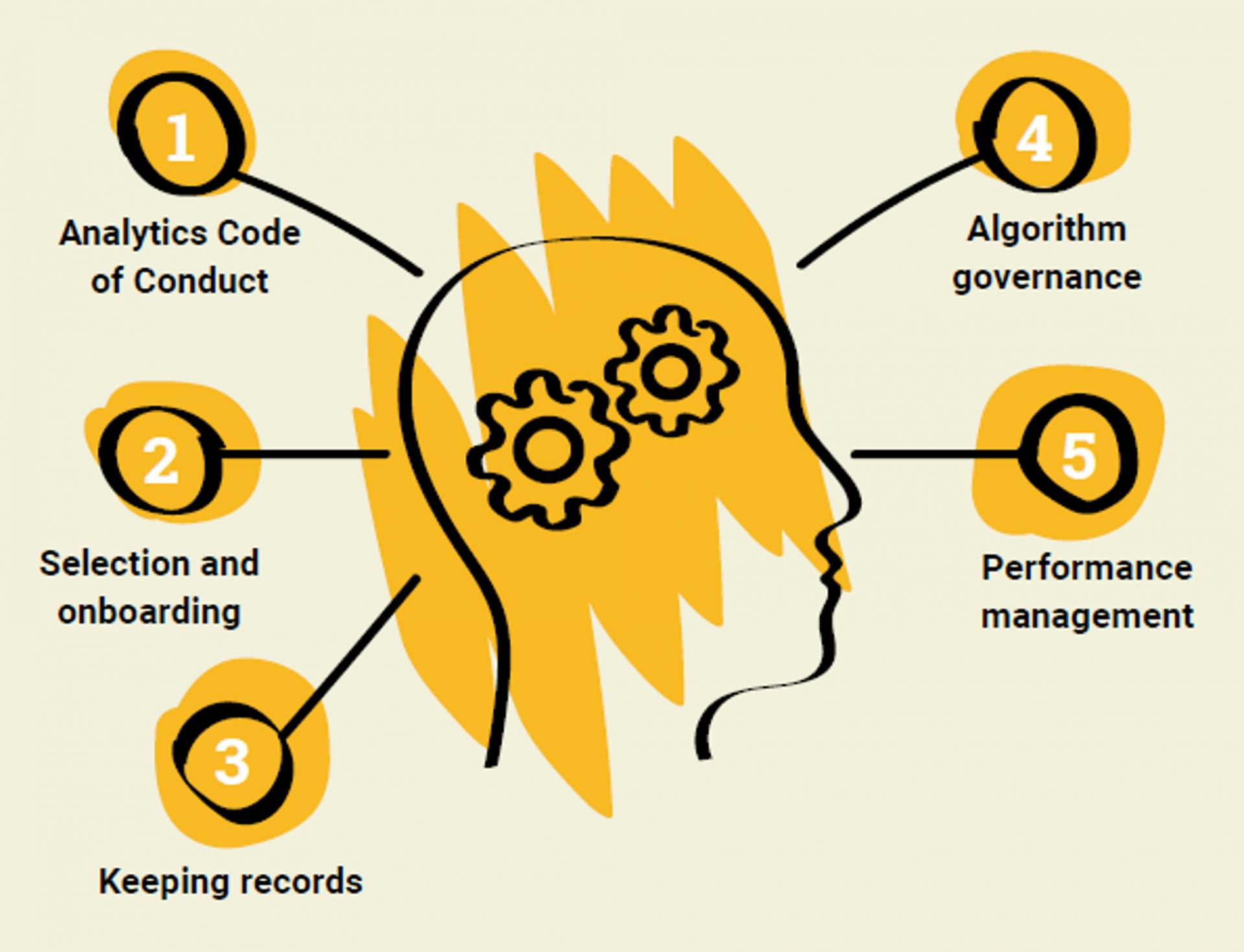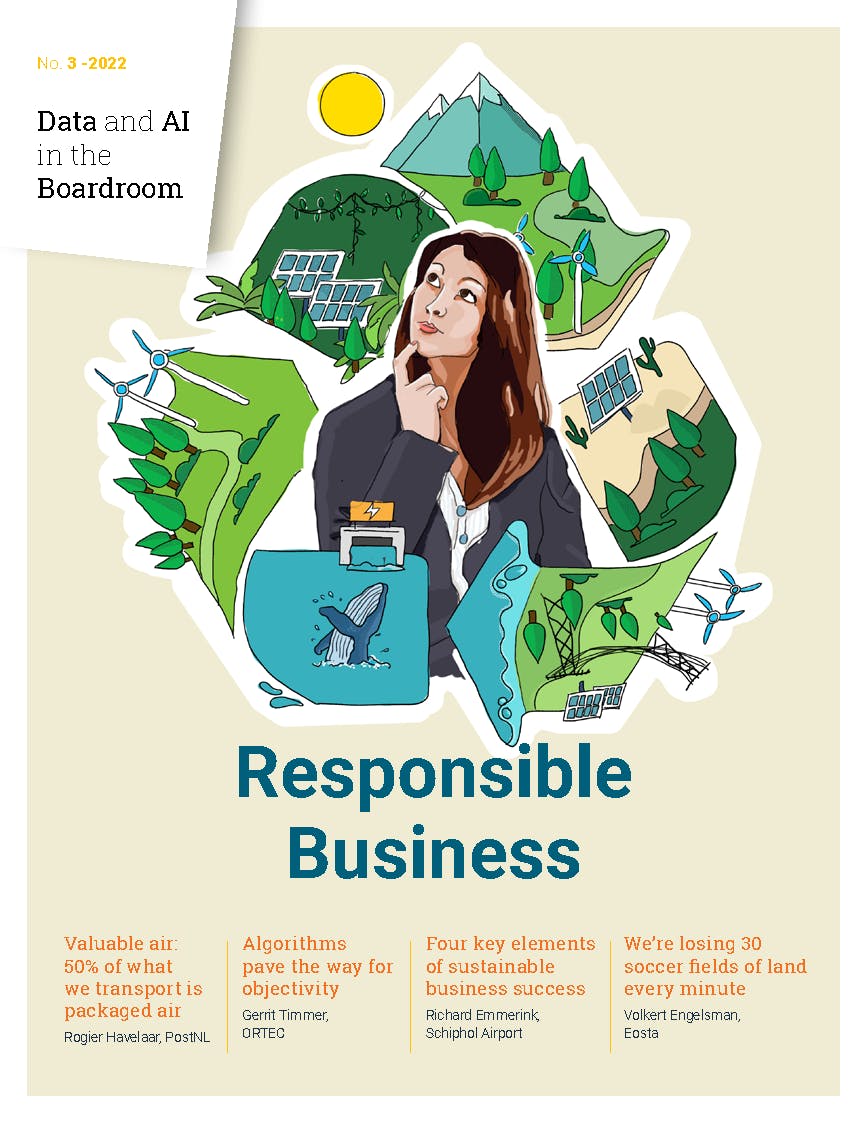Manage algorithms like you manage people
Read time: 5 minutesRianne Langenberg, Business Strategist at ORTEC, argues that algorithms should be treated somewhat like human employees by having the organization and management monitor whether they’re doing their job properly. She outlines five factors that, when done properly, will make it possible to manage algorithms. At the same time, she’s fully aware that life has to be made as easy as possible for human employees: “Algorithms are often new for senior management. We want to make them more accessible by giving them a familiar face. Our approach is anything but new: it’s a rejigged version of a system that most companies are thoroughly familiar with.”

“We accept that human beings make mistakes”, Langenberg begins, “but as soon as a human task is taken over by an algorithm, we change our mind in a heartbeat. The simple fact is that algorithms also make mistakes. All they know is what we taught them, which means they’re in the dark about everything else. We have learned to deal with human error and have managed to largely eliminate mistakes by developing sophisticated selection procedures, management methods, peer reviews, you name it. We should apply the same principles to algorithms.”
“We’ve learned to deal with human error. We should apply the same principles to algorithms.”
Rianne Langenberg
Ethical standards
According to Langenberg, clear parallels should be drawn between the world of people and the world of algorithms. “Who is responsible for upholding an organization’s ethical standards? The board bears ultimate responsibility, but the department managers have to make sure that the people working in their department comply with ethical standards. With our approach, they would also have to make sure that the algorithms used in their department meet all applicable standards. The problem, however, is that department managers are not necessarily algorithm hotshots, so the question is: how can we help them get and stay in control? ORTEC has identified five elements that companies should put in place in order to properly manage algorithms. And anyone who has ever managed people will certainly be familiar with them.
We’ve learned to deal with human error. We should apply the same principles to algorithms.

1. Analytics code of conduct
“This is essentially the umbrella for the other four elements”, Langenberg explains. “The code of conduct is a set of ethical guidelines, a framework that describes the requirements an algorithm should meet and how it ought to behave, paying particular attention to explainability and fairness. Moreover, the code of conduct also describes how processes and governance should be organized.”
2. Selection and onboarding
“As soon as you start using a new algorithm, you have to carefully consider what type of algorithm you’re working with: if you’re going to use sensitive data, you may have to decide whether or not to use a black-box algorithm, with a view to explainability. You make choices based on the risk level involved, such as what tests to perform, as well as determining what checks have to be performed before an algorithm goes live. You could compare it to a company bringing in a new hire: you don’t just throw them in at the deep end.”
3. Keeping records
"Companies keep employee records in an HR system. Thorough documentation is just as important when it comes to algorithms, because more and more regulations are emerging, and people are demanding more transparency and accountability. You cannot demonstrate anything if you do not have the records to match, so you need a system to track the processes you have in place to guarantee compliance and records of which algorithms you are running, who manage them, what their job descriptions are and how they have performed in recent years.”
4. Algorithm governance
"Every company has a governance structure: who manages whom, who are the department heads, what teams are there? Sometimes, employees fall under a particular department head in terms of hierarchy, while on a functional level they are also managed by someone else. You’ll encounter similar situations with algorithms: the process owner may be from the business side of things, but you’ll still need IT or data employees to ensure good governance.”
5. Performance management
“After you hire a new employee, you want to keep monitoring their performance, and the same goes for algorithms: you have to check whether they’re still doing what they’re supposed to be doing. Moreover, people need the occasional training session, and algorithms are no different. And if you find that an employee simply isn’t performing, you’ll have to consider letting them go. Similarly, if your algorithm is doing poorly, you might choose to substitute it for a different model.”

Rianne Langenberg
"You have to keep checking whether algorithms are still doing what they’re supposed to."
Who is responsible
The potential impact of algorithms has not gone unnoticed in society, Langenberg says: “Machine-learning algorithms evolve over time. By now, most people know that you have to keep monitoring them, but other non-machine-learning algorithms need the same level of care. Although the algorithm itself might not change, the world around it will. The fact that an algorithm worked well five years ago, amidst the environment, processes and ethical values of the time, is no guarantee that it will continue to perform today. Many organizations are aware of this, but simply don’t know how to organize it effectively. That’s why we say: just use the same approach you do for people. You want as many people as possible in your organization to feel responsible for algorithms, just like you want your people to signal and speak up about unethical behavior. If everyone keeps a close eye on how an algorithm ‘behaves’, the odds of things going wrong go down drastically.”
“If everyone keeps a close eye on how an algorithm ‘behaves’,the odds of things going wrong go down drastically.”
Download your magazine
This article is part of the 3rd issue of our magazine Data and AI in the Boardroom. Get your copy now.
We've asked leading figures in different sectors about how their organizations develop into more sustainable businesses, what goals they have set for themselves, what challenges they face underway, and how using data in innovative ways help them to make responsible decisions.
In this issue you’ll catch a glimpse of the approaches by leading figures at organizations like Schiphol Airport, PostNL and Eosta.

Integration with existing initiatives
Langenberg wants to stress that none of this is new. “Lots of these elements are perfectly aligned with MLOps, the latest standard for developing and managing Machine Learning models. What’s more, many companies have already set up data governance systems. Algorithm governance is by no means ubiquitous, but it would be a natural fit. Identify which checks and balances you have in place, fill in the gaps and make sure to paint a clear picture of how you manage your algorithms.”
About Rianne Langenberg
Rianne is Managing Consultant and Business Strategist, specialized in digital strategy, change management and process design. Rianne has supported a variety of organizations, like Achmea, in shaping and accelerating their digital transformation, aiming to not just improve but to renew.